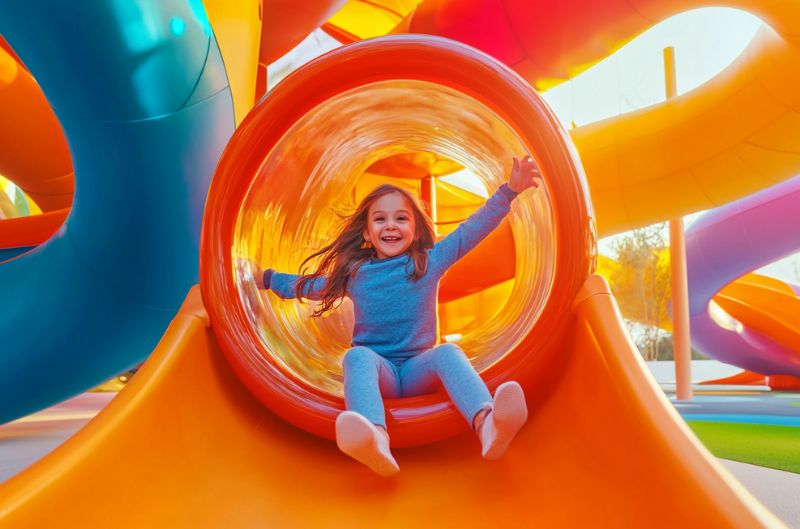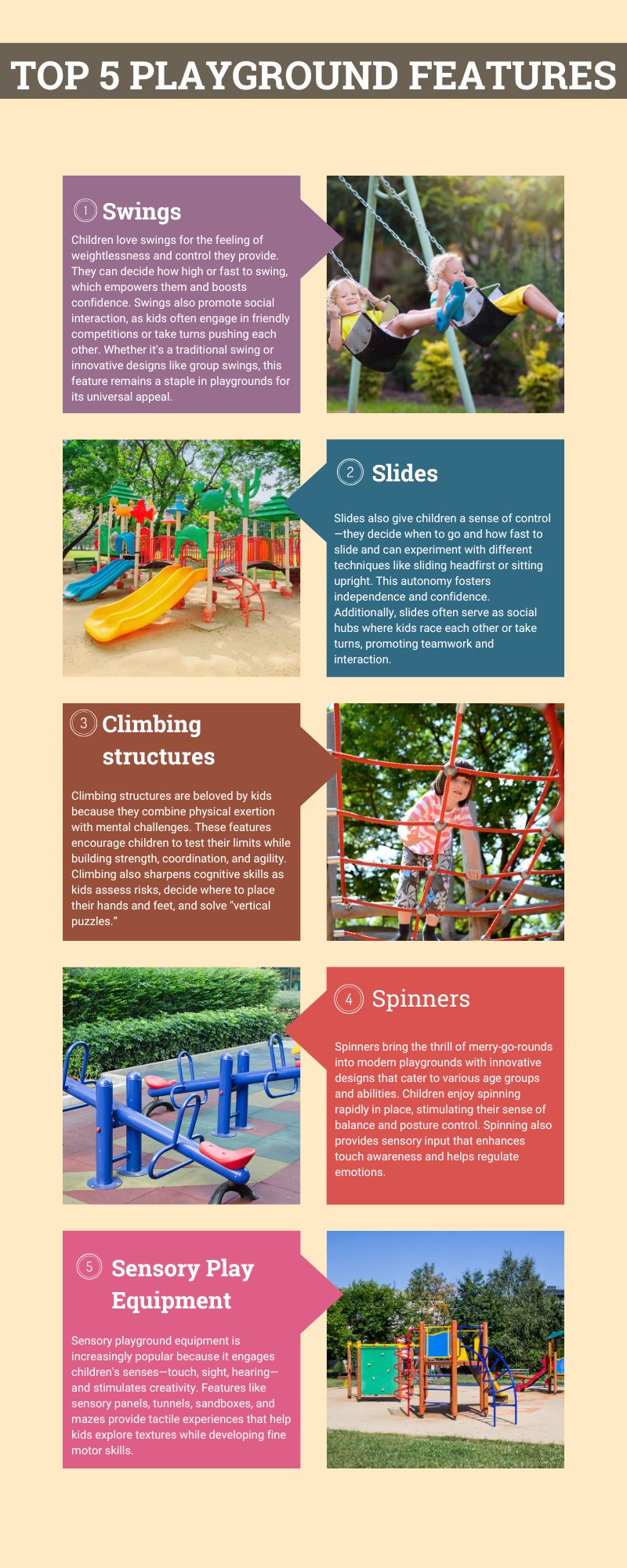
Top 5 Playground Features That Children Love and Why
Author: Austin Stanfel
Playgrounds are cherished spaces where children can explore, socialize, and develop essential skills while having fun. Certain playground elements consistently stand out as favorites among kids among the countless features available. These features not only captivate their imagination but also offer developmental benefits. Below are the top five playground features children love and the reasons behind their popularity.
1. Swings: The Thrill of Flying
Swings are a timeless playground favorite that offers children a unique blend of excitement and relaxation. The rhythmic swinging motion provides sensory stimulation, helping children regulate their nervous systems and reduce stress. Swinging fosters gross motor skills as kids learn to pump their legs to propel themselves higher, improving coordination and spatial awareness.
Children love swings for the feeling of weightlessness and control they provide. They can decide how high or fast to swing, which empowers them and boosts confidence. Swings also promote social interaction, as kids often engage in friendly competitions or take turns pushing each other. Whether it’s a traditional swing or innovative designs like group swings, this feature remains a staple in playgrounds for its universal appeal.
2. Slides: Speed and Adventure
Slides are another classic playground feature that children adore for their sense of adventure and thrill. Sliding down offers a rush of speed and motion that engages multiple senses and makes the experience. Climbing up the slide adds an element of challenge, encouraging physical activity and building strength.
Slides also give children a sense of control—they decide when to go and how fast to slide and can experiment with different techniques like sliding headfirst or sitting upright. This autonomy fosters independence and confidence. Additionally, slides often serve as social hubs where kids race each other or take turns, promoting teamwork and interaction.
3. Climbing Structures: Physical Challenge Meets Problem-Solving
Climbing structures are beloved by kids because they combine physical exertion with mental challenges. These features encourage children to test their limits while building strength, coordination, and agility. Climbing also sharpens cognitive skills as kids assess risks, decide where to place their hands and feet, and solve “vertical puzzles.”
The sense of accomplishment after reaching the top boosts confidence and self-esteem. Climbing structures often come in diverse forms—net climbers, rock walls, dome climbers—allowing kids to explore creatively while engaging in healthy risk-taking. These features are particularly appealing because they cater to solo play and group collaboration.
4. Spinners: The Joy of Rotation
Spinners bring the thrill of merry-go-rounds into modern playgrounds with innovative designs that cater to various age groups and abilities. Children enjoy spinning rapidly in place, stimulating their sense of balance and posture control. Spinning also provides sensory input that enhances touch awareness and helps regulate emotions.
Inclusive spinners allow children with physical disabilities to participate in the fun alongside their peers, fostering social bonds. Whether playing solo or in groups, spinners encourage teamwork as kids coordinate their movements to keep the spinner rotating smoothly.
5. Sensory Play Equipment: Engaging All Senses
Sensory playground equipment is increasingly popular because it engages children’s senses—touch, sight, hearing—and stimulates creativity. Features like sensory panels, tunnels, sandboxes, and mazes provide tactile experiences that help kids explore textures while developing fine motor skills.
These elements are particularly beneficial for children with sensory sensitivities or developmental challenges. Sensory play equipment encourages imaginative play while offering calming environments for those needing it.
For example, sandboxes allow children to dig and build while strengthening hand-eye coordination, while sensory panels introduce vibrant colors and interactive components that captivate attention.
Conclusion
The top five playground features—swings, slides, climbing structures, spinners, and sensory play equipment—are universally loved by children because they blend fun with developmental benefits. These elements entertain and help kids build physical strength, cognitive skills, social bonds, and emotional resilience. By understanding why these features resonate with children deeply, parents and educators can create playgrounds that inspire creativity while supporting holistic growth.


